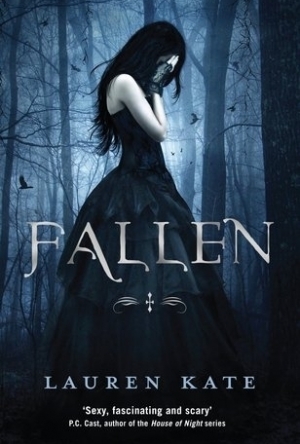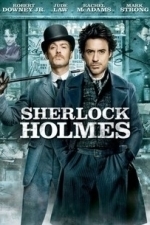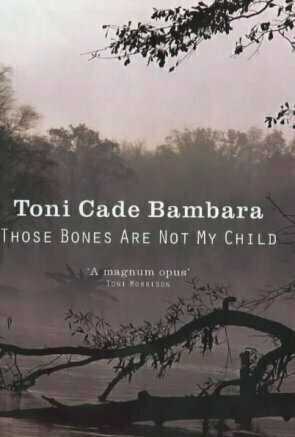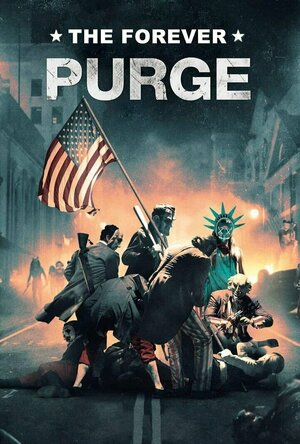
Amplified Classic Bible
Reference and Book
App
Amplified Bible Classic by Olive Tree is a must-have app for reading and studying God’s Holy Word....

NRSV Bible by Olive Tree
Reference and Book
App
NRSV Bible+ by Olive Tree is a must-have app for reading and studying God’s Holy Word. Take notes,...
Cody Cook (8 KP) rated Writings Of Thomas Paine Volume 4 (1794 1796); The Age Of Reason in Books
Jun 29, 2018
The book seems to have had three major objectives: the support of deism, the ridicule of what Paine found loathsome in Christian theology, and the demonstration of how poor an example the Bible is as a reflection of God.
In a sense, Paine's arguments against Christian theology and scripture were meant to prop up his deistic philosophy. Paine hoped that in demonizing Christianity while giving evidences for God, he would somehow have made the case for deism. But this is not so. If Christianity is false, but God exists nonetheless, we are not left only with deism. There are an infinite number of possibilities for us to examine regarding the nature of God, and far too many left over once we have eliminated the obviously false ones. In favor of deism Paine has only one argument—his dislike of supernatural revelation, which is to say that deism appeals to his culturally derived preferences. In any case, Paine's thinking on the matter seemed to be thus: if supernatural revelation could be shown to be inadequate and the development of complex theology shown to be an error, one could still salvage a belief in God as Creator, but not as an interloper in human affairs who required mediators.
That being said, in his support of deism, Paine makes some arguments to demonstrate the reasonableness in belief in, if not the logical necessity of the existence of, God which could be equally used by Christians.
For instance, just as the apostle Paul argued in his epistle to the Romans that, "what can be known about God is plain to [even pagans], because God has shown it to them. For his invisible attributes, namely, his eternal power and divine nature, have been clearly perceived, ever since the creation of the world, in the things that have been made" (Romans 1:19-20, ESV), so also Paine can say that, "the Creation speaketh an universal language [which points to the existence of God], independently of human speech or human language, multiplied and various as they be."
The key point on which Paine differs from Paul on this issue is in his optimism about man's ability to reason to God without His assisting from the outside. Whereas Paul sees the plainness of God from natural revelation as an argument against the inherent goodness of a species which can read the record of nature and nevertheless rejects its Source's obvious existence, Paine thinks that nature and reason can and do lead us directly to the knowledge of God's existence apart from any gracious overtures or direct revelation.
On the witness of nature, Paine claims, and is quite correct, that, "THE WORD OF GOD IS THE CREATION WE BEHOLD: And it is in this word, which no human invention can counterfeit or alter, that God speaketh universally to man." What is not plainly clear, however, is that man is free enough from the noetic effects of sin to reach such an obvious conclusion on his own. Indeed, the attempts of mankind to create a religion which represents the truth have invariably landed them at paganism. By paganism I mean a system of belief based, as Yehezkel Kaufmann and John N. Oswalt have shown, on continuity.iv In polytheism, even the supernatural is not really supernatural, but is perhaps in some way above humans while not being altogether distinct from us. What happens to the gods is merely what happens to human beings and the natural world writ large, which is why the gods are, like us, victims of fate, and why pagan fertility rituals have attempted to influence nature by influencing the gods which represent it in accordance with the deeper magic of the eternal universe we all inhabit.
When mankind has looked at nature without the benefit of supernatural revelation, he has not been consciously aware of a Being outside of nature which is necessarily responsible for it. His reasoning to metaphysics is based entirely on his own naturalistic categories derived from his own experience. According to Moses, it took God revealing Himself to the Hebrews for anyone to understand what Paine thinks anyone can plainly see.
The goal of deism is to hold onto what the western mind, which values extreme independence of thought, views as attractive in theism while casting aside what it finds distasteful. But as C.S. Lewis remarked, Aslan is not a tame lion. If a sovereign God exists, He cannot be limited by your desires of what you'd like Him to be. For this reason, the deism of men like Paine served as a cultural stepping stone toward the atheism of later intellectuals.
For Paine, as for other deists and atheists like him, it is not that Christianity has been subjected to reason and found wanting, but that it has been subjected to his own private and culturally-determined tastes and preferences and has failed to satisfy. This is the flipside of the anti-religious claim that those who believe in a given religion only do so because of their cultural conditioning: the anti-religionist is also conditioned in a similar way. Of course, how one comes to believe a certain thing has no bearing on whether that thing is true in itself, and this is true whether Christianity, atheism, or any other view is correct. But it must be stated that the deist or atheist is not immune from the epistemic difficulties which he so condescendingly heaps on theists.
One of the befuddling ironies of Paine's work is that around the time he was writing about the revealed religions as, “no other than human inventions set up to terrify and enslave mankind, and monopolize power and profit," the French were turning churches into “temples of reason” and murdering thousands at the guillotine (an instrument of execution now most strongly identified with France's godless reign of terror). Paine, who nearly lost his own life during the French Revolution, saw the danger of this atheism and hoped to stay its progress, despite the risk to his own life in attempting to do so.
What is odd is that Paine managed to blame this violent atheism upon the Christian faith! Obfuscated Paine:
"The Idea, always dangerous to Society as it is derogatory to the Almighty, — that priests could forgive sins, — though it seemed to exist no longer, had blunted the feelings of humanity, and callously prepared men for the commission of all crimes. The intolerant spirit of church persecution had transferred itself into politics; the tribunals, stiled Revolutionary, supplied the place of an Inquisition; and the Guillotine of the Stake. I saw many of my most intimate friends destroyed; others daily carried to prison; and I had reason to believe, and had also intimations given me, that the same danger was approaching myself."
That Robespierre's deism finally managed to supplant the revolutionary state's atheism and that peace, love, and understanding did not then spread throughout the land undermines Paine's claims. Paine felt that the revolution in politics, especially as represented in America, would necessarily lead to a revolution in religion, and that this religious revolution would result in wide acceptance of deism. The common link between these two revolutions was the idea that the individual man was sovereign and could determine for himself what was right and wrong based on his autonomous reason. What Paine was too myopic to see was that in France's violence and atheism was found the logical consequence of his individualistic philosophy. In summary, it is not Christianity which is dangerous, but the spirit of autonomy which leads inevitably into authoritarianism by way of human desire.
As should be clear by now, Paine failed to understand that human beings have a strong tendency to set impartial reason aside and to simply evaluate reality based on their desires and psychological states. This is no more obvious than in his own ideas as expressed in The Age of Reason. Like Paine's tendency to designate every book in the Old Testament which he likes as having been written originally by a gentile and translated into Hebrew, so many of his criticisms of Christian theology are far more a reflection upon himself than of revealed Christianity. One has only to look at Paine's description of Jesus Christ as a “virtuous reformer and revolutionist” to marvel that Paine was so poor at introspection so as to not understand that he was describing himself.
There is much more that could be said about this work, but in the interest of being somewhat concise, I'll end my comments here. If you found this analysis to be useful, be sure to check out my profile and look for my work discussing Paine and other anti-Christian writers coming soon.
BookblogbyCari (345 KP) rated Fallen (Fallen, #1) in Books
Dec 12, 2018
The gist of the book is given away on its cover, so there’s no element of surprise here. It’s a love story between a human girl and an angel.
Although it clearly lies under the paranormal genre, the book is predominantly a romance, and the characters, even though they’ve been alive centuries, are presented as come-of-age teenagers, placing the book under the young adult genre also. It also comes under the urban fantasy genre, with its edgy beginnings at a reform school.
The prologue is enchanting with its snippet of the angel’s love for the girl in her previous life. The rest of the story is written from the viewpoint of the girl, Luce. Lucy would be your typical, if a little nervous, American girl, if it weren’t for her visions of black shadows that seem to appear only to her. With no reasonable explanation for the shadows, she was put on anti-psychotic medication.
Her story begins when she’s placed at a reform school, following the death of a friend that for some reason she has little recollection of, and (perhaps therefore) blames herself for. As you can imagine, the reform school has some lively, dramatic and intriguing characters! A love triangle is sparked on her first day. There’s the somehow familiar Daniel, who smiles, then flips her the bird, and the charming charismatic Cam, who can’t wait to spend time with her.
Luce finds herself drawn to Daniel, but he keeps giving her the brush off. Cam meanwhile takes a special interest in Luce. Once Luce has her “first” kiss with Daniel, she decides to meet Cam to apologise for leading him on. However, she ends up kissing Cam and the black shadows come after them. Daniel’s identity as a fallen angel is revealed to Luce and a battle (rather than their previous fist fight) begins. Luce flees for safety, only to find herself in further danger!
The obvious comparison here is with Stephanie Meyers Twilight Saga, which has a similar love triangle, but with a vampire and werewolf rather than fallen angels. Lauren Kate’s writing is not as good as Stephanie Meyers’, but is just as good as some of the other YA paranormal authors such as L J Smith, and Cassandra Clare. Although the romance is the central feature of the book, there are no erotic scenes.
I watched the film before reading the book, and found the film quite forgettable - but the book had me hooked! My interest in the next book in the series isn’t so much for the romance between Luce and Daniel, but for the inclusion of the other characters and the clear impression that there’s a lot more to the story than what’s been discovered so far!
Gareth von Kallenbach (980 KP) rated Sherlock Holmes (2009) in Movies
Aug 8, 2019
The people of London are grateful to be free of the terror induced by Lord Blackwood (Mark Strong), but solving the mystery leaves Holmes somewhat despondent and uninterested in solving other mysteries. Most likely because Watson is moving out of their home and office to complete his pending marriage plans. The lack of complexity in the cases Holmes is requested to take leaves him abundant time to sulk in his study and scare the housing staff with his bizarre behavior and inventions.
The monotony of Holmes’s life is abruptly ended when Blackwood summons him shortly before his scheduled execution for his crimes. Blackwood indicates that a dark plot is in the works and though his claims are dismissed by the authorities as the desperate ravings of a madman about to be executed, Holmes begins to think there is more to the case than meets the eye. Things take a bizarre turn when Blackwood appears to rise from the dead and starts a new wave of terror over the city. Pressed into action, Holmes and Watson uncover a series of clues that reveal a diabolic plot that will alter the balance of power in England.
In a race against time, Holmes and Watson must also deal with their unresolved issues regarding Watson’s pending marriage as well as a mysterious, seductive woman from Holmes’s past (Rachel Mc Adams). What follows is a winning combination of comedy, action, mystery, and a touch of romance Ritchie knows he has a strong cast and gives Downey, Law, and Mc Adams ample room to explore their characters yet keeps them within the story.
The plot of the film may be the weakest point and at times its uncertain if it is an action buddy film or a caper picture. It attempts to blend the two but often comes up short, lacking enough action for my taste. The plot may also be confusing to some as it lacks a cohesive structure and seems to be a free roaming entity that exists within a general framework.
Downey and Law work well with one another and Downey gives a strong, clever performance in a role that requires both physical and cerebral dexterity. Mc Adams is good as the love interest in the film but would have benefited from more time to better expand her character which I hope will happen in future films.
While the film may not come across as a traditional American studio film, there is a lot to like about this new Holmes and the new franchise it launches for fans old and new.
Hadley (567 KP) rated Those Bones Are Not My Child in Books
Nov 12, 2019
Bambara writes not in a normal narrative - - - just telling a story from specific viewpoints, but she often breaks off into smash poetry to depict a character's state-of-mind, which, sometimes can be off putting for the reader, breaking the flow of the story. Yet, the use of smash poetry combined with the era and the heart breaking subject at hand, separates Those Bones Are Not My Child from every True Crime book I have ever read. But a note for fans of True Crime, this story is from the view point of the victims' families and the search they went through to try and catch the murderer(s), unlike most TC books, which follow the police through the investigation leading to, usually, the capture of the perpetrator. From living in Atlanta during the time of the murders, Bambara was able to reconstruct the life of a black family in 1980's Georgia, while focusing on the effect these terrible crimes had on the surrounding community. Bambara did an amazing job on what most writers cannot.
The amount of characters, specifically the fictional ones, are very well created. She describes just enough to give readers the ability to tell them apart, showing every now and then from their own viewpoints. Out of all the characters, I came to really like Zala's two other children: Kenti and Kofi. One particular scene shows the strain of Sonny's disappearance on their family: " Zala parked the comb again and sat back. 'Listen, you two.' Kofi dropped down onto his knees. 'The police and the newspapers don't know what the hell is going on, so they feel stupid, because they're supposed to know, they're trained to know, they're paid to know. It's their job. Understand? But it's hard for grown-ups to admit they're stupid, especially if they're professionals like police and reporters. So they blame the children. Or they ignore them and fill up the papers with the hostages in Iran. Understand? And now... Jesus... they've got people calling those kids juvenile delinquents.'
'Don't cry.' Kenti tried to lean into her lap and got pushed away.
'They don't know a damn thing and they act like they don't want to know. So they blame the kids 'cause they can't speak up for themselves. They say the kids had no business being outdoors, getting themselves in trouble.'
'You let us go outdoors.'
'Of course I do, baby. We go lots of places, 'cause a lot of people fought hard for our right to go any damn where we please. But when the children go out like they've a right to and some maniac grabs them, then it's the children's fault or the parents who should've been watching every minute, like we don't have to work like dogs just to put food on the table.'
Kofi walked on his knees towards the bed, but he didn't lean on her like he wanted 'cause she might push him away. So he just put his hand on the mattress next to hers."
During the Atlanta Child Murders, victims were random, except for that they were children from the same neighborhood, and they were African-American. At first, police didn't believe a serial murderer was going around abducting children, but rather that 'poor, broken' families were killing their own. In the Prologue, Bambara shows that the victims' families and private detectives came up with more ideas of the motive than the police did:
" White cops taking license in Black neighborhoods.
The Klan and other Nazi thugs on the rampage.
Diabolical scientists experimenting on Third World people.
Demonic cults engaging in human sacrifices.
A 'Nam vet unable to make the transition.
UFO aliens conducting exploratory surgery.
Whites avenging Dewey Baugus, a white youth beaten to death in spring '79, allegedly by Black youths.
Parents of a raped child running amok with 'justice.'
Porno filmmakers doing snuff flicks for entertainment.
A band of child molesters covering their tracks.
New drug forces killing the young (unwitting?) couriers of the old in a bid for turf.
Unreconstructed peckerwoods trying to topple the Black administration.
Plantation kidnappers of slave labor issuing the pink slip.
White mercenaries using Black targets to train death squadrons for overseas jobs and for domestic wars to come. "
All of these theories are explored with evidence in Those Bones Are Not My Child. One scene in Part III, Zala's cop friend, B.J. shows up to her house to tell her to stop bringing attention to the investigation, " 'That Eubanks woman - - - your husband's friend? - - - she said you were bringing in the TV networks to blow the case open. I thought we had an agreement to keep each other informed. This morning I find out through the grapevine that you parents got a medium stashed in a hotel here in town, some woman who's been making headlines up north with cases that supposedly have the authorities stumped. If you knew how much work has been done on this case - - - no, listen, don't interrupt me. Then I find out - - - and not from you - - - that some of you parents are planning to tour the country cracking on the investigation. That's not too smart. And you should have told me.' " These two may have been fictional characters, but in Bambara's Acknowledgments, she states that all scenarios were true, and that she made B.J. to tell about the actual police officers who were involved with the investigation.
The tension between the police and the public is felt throughout the entire story. Despite all of the work the citizen task force put in, police arrested a man named Wayne Williams for the murder of two adult victims (who, due to their mental age, which was stated to be that of children, were placed on the victims' list of the Atlanta Child Murders): " Wayne Williams, charged with the murder of twenty-seven-year-old Nathaniel Cater and implicated in the murder of the other adults and children on the official list..." Zala, having worked for almost a year at the STOP offices, she, along with most of the community, doubt that Williams was a lone killer or even the killer at all. Williams never stood trial for the childrens' murders, but the police informed the public that he did it, case closed - - - although, after Williams' arrest, children were still being abducted and their bodies were still being found. Even after Williams' trial and the guilty verdict for two adult victims, some people stuck around to continue to investigate and claim Williams a 'scapegoat' of politics: " There were still pockets of interest and people who wouldn't let the case go. James Baldwin had been coming to town off and on; a book was rumored. Sondra O'Neale, the Emory University professor, hadn't abandoned her research, either. From time to time, TV and movie types were in the city poking around for an angle. Camille Bell was moving to Tallahassee to write up the case from the point of view of the STOP committee. The vets had taken over The Call now that Speaker was working full-time with the Central American Committee. The Revolutionary Communist Party kept running pieces on the case in the Revolutionary Worker. Whenever Abby Mann sent down a point man for his proposed TV docudrama, the Atlanta officials and civil rights leaders would go off the deep end. " At the end of it all, the questions still remain: did Williams kill all of those children by himself? Was he part of a pornographic cult that killed the children? Or is Williams completely innocent, and the murderer(s) are still out there? In Those Bones Are Not My Child, I guarantee you will be left questioning if the police were right.
All in all, the writing transitions can become confusing sometimes, especially the interludes of smash poetry, but I highly recommend this book to people who like the True Crime genre, especially of any interest in this specific case.
Chris Sawin (602 KP) rated The Forever Purge (2021) in Movies
Dec 14, 2021
Written by The Purge creator James DeMonaco and directed by Everardo Gout, The Forever Purge is the fifth film in the franchise and its first entry since The Purge TV series ended after only two seasons in 2019.
Taking place primarily in Los Felis Valley, Texas, The Forever Purge follows Mexican refugees Adela (Ana de la Reguera) and Juan (Tenoch Huerta), who despite having made a life in America after living in the country for just ten months, continue to find themselves the victims of racism.
A talented cowboy, Juan works for the financially successful Tucker family on their ranch alongside Dylan (Josh Lucas), a member of the Tucker family who isn’t as good of a cowboy as Juan and lets his “white man good, Mexican bad” mentality drive his actions way more often than he should.
With the announcement that the Purge will be reinstated, the two buckle down and prepare to survive their first ever experience with the country’s most gruesome tradition. While the two successfully find sanctuary and survive the initial 12 hours of the sanctioned Purge, they emerge to find that many US citizens have just outright refused to stop purging.
Amidst the chaos, Canada and Mexico open their borders for six hours, allowing anyone not interesting in partaking in the events and wants to survive to flee to one of respective countries. However, the two countries also announce that after these six hours pass, they will be closing their American borders forever, preventing any further escape.
As the entire nation falls into chaos, its citizens begin to realize that The Forever Purge has begun.
The fifth film in the franchise and the latest installment since The Purge tv series ended in 2019, The Forever Purge is pretty much of the same for the horror franchise – in other words, it’s not going to make or break the opinion you already have about these movies.
A definite improvement over The First Purge, which one could argue is the worst film in the series, the performances in The Forever Purge in particular are leaps and bounds better in comparison to those found in its predecessor
You know how there are some movies where, for some reason or another, you don’t watch every trailer it drops before release, and thus are end up surprised when the film turns out to be completely different from the one-note-concept you imagined it would have?
While the upside to this avoidance of marketing material is that you’re almost completely in the dark about a given film prior to seeing it, the downside is that what your own imagined concept of the film may have more more potential than the final product.
The Forever Purge was one such film for me. For some reason, I thought the movie took place in a not-too-distant future where the majority of the country had become a desolate wasteland, water was scarce, and tumbleweeds were the closest thing to a pet anyone had.
Not only that, but I imagined that The Purge, long-outlawed in this post-apocalyptic future, had been reinstated as a full-time event by a group of crazed desperadoes.
Sadly, my idea of a western-slash-Mad Max-inspired Purge film ended up being way more interesting than The Forever Purge actually was, as most of the film’s creativity is found not in the Purge itself, but rather in the expansion to the franchise’s lore – specifically the state in which the USA is left in by the end of the film, as well as the end credits reveal of where Americans across the country are located
A Purger in The Forever Purge, directed by Everardo Valerio Gout.As a result, The Forever Purge ends with the franchise seemingly having lost whatever bite it may have once had. Kills are about as memorable as a bug splat on your windshield while driving on the highway, character development is minimal at best, and you aren’t invested in the outcome of what’s transpiring whatsoever.
You also don’t really know who the protagonists of the film are. Do you root for the successful family that doesn’t know how to cooperate outside of its own race, or the married couple that came to this country illegally?
Furthermore, why is it that each film’s unique masked purgers, who literally show up for only a handful of scenes in each of their respective appearances, are the best part of these films? It’s like really awesome DLC for a lifelessly dull video game.
While the action-horror film does at least introduce two strong female characters, Dylan Tucker’s wife, Cassidy (Cassidy Freeman), isn’t one of them. Her defining characteristics are that she’s pregnant and helpless.
However, Dylan’s younger sister, Harper (Leven Rambin), is awesome. She knows how to use a gun, is resourceful, intelligent, and breaks the ‘dumb blonde’ stereotype we’re all too familiar with.
Ana de la Reguera also rectifies her death in Army of the Dead with her performance as Adela, a former member of a group of women who fought against the cartel in Mexico who can fight, has knowledge of weapons, and knows how to navigate the city in the safest way possible. In other words, she’s a bad ass.
While The Forever Purge is meant to serve as a ‘final entry’ for the franchise, everything is left wide open at the end of the film, just in case another sequel gets greenlit. After all, we know how the general movie-going population just loves to keep mediocre franchises alive.
As such, nothing is resolved by the end of film, and the Forever Purge ends up being just what it sounds like: never ending.
The issue with this non-ending is that where the franchise could potentially go and where it’s actually going are two entirely different things, and thus the end result of the Forever Purge is way more disappointing because of this split.
A lackluster Purge entry at best that is only considered decent because the film that came before it is so awful, The Forever Purge does put some effort into attempting to put a different spin on how we view immigrants, but even that seems half-cocked at best.
With a concept this stagnant, The Forever Purge has successfully done what other horror movies have never been able to do; make deaths, murdering, and killing a total bore. Hopefully, with any luck, The Purge franchise will pillage and murder itself with this entry.

Westpac Banking for iPad
Finance and Business
App
Westpac Banking for iPad makes banking as simple as a tap and a swipe. This app is for Australian...

Typhoons by Royal Blood
Album
After two UK #1 albums, 2 million album sales and an array of international acclaim, you might’ve...

Hopper - Watch & Book Flights
Travel and Reference
App
Save up to 40% on your next flight! Hopper predicts the future of airfare. Watch your next flight in...




